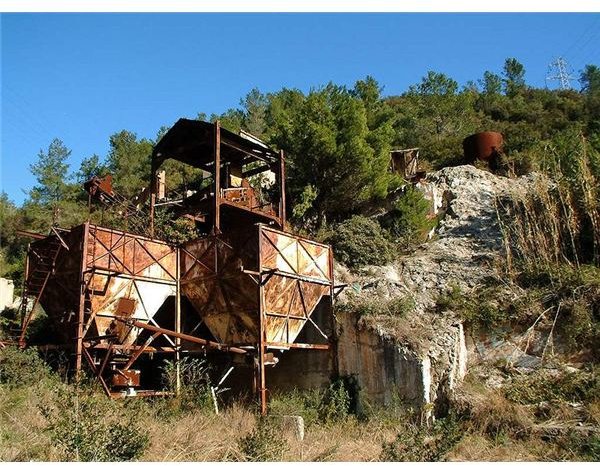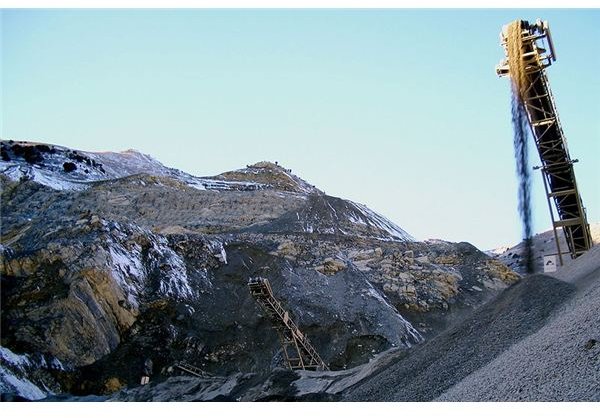Surface Mining For Construction Aggregates: Rock Quarries, Sand And Gravel Pits
Rock, Sand, And Gravel
When most people think about aggregates like rock, sand, and gravel it is usually along the lines of end use properties, cost, and availability. Like how much does a cubic yard of gravel weigh, the cost per cubic yard, what are the available gravel sizes, will pea gravel coverage be adequate for the driveway, etc. Very few think about the actual sources of these versatile construction materials. But getting down and dirty with rock quarries, sand quarries, and other forms of surface mining has been on the mind of civil engineers and architects for centuries.
A Brief History Of Quarries
The earliest aggregate quarries were probably low volume dig and transport operations in deserts, beaches, and rock spits, where the natural weathering actions of wind and hydrology processed and collected the material for local use. While these same processes ensured little archeological evidence of this quarrying activity was left behind, modern day thefts from similar prime locations such as Caribbean beaches illustrate the easy access and desirability of these materials. As engineering capabilities advanced, civilizations like the Greeks and Romans developed methods and tools to dig, pulverize, and transport more distant and specific types of aggregates for construction purposes, for example to make opus caementicium. This early predecessor of modern Portland cement concrete helped shift the focus from expensive, specialized stone masonry construction to the much more efficient poured stone method. This method required non-skilled labor and readily processed raw materials. Consequently, surface mines and quarries were developed to meet the need for these aggregate materials, with specialized tools and processes not far behind. Modern quarries now produce an astounding variety of both mundane and specialized rock and gravel materials in mind boggling quantities. This is the result of both varied aggregate demand and the development of specialized processing and mining equipment for quarries and other types of surface mining.
Quarry Processes And Equipment
While each quarry has its own specialized equipment, crushed stone, gravel, and sand quarries utilize similar processes. Heavy digging equipment like the front end loader can move over 50 cubic yards of material per scoop; drag lines can scoop more than 100 cubic yards (around 120 tons) of material per load. Considering 1 cubic yard of 3/8” pea gravel can cover a 50 sq.ft.area 6 inches deep, that single drag line scoop could move enough material to cover nearly 5000 sq.ft.! In order to move that much aggregate to various processing stations efficiently, conveyor belts and auger screw systems can transport over 5000 tons of material per hour from the mechanized excavation equipment. Powerful jaw, impact, and cone crushers can reduce the size of the feed belt raw material to the desired size range in minutes while imparting a fractured, coarse texture to the aggregates. This texture can be important for applications requiring good particle to particle contact, such as structural road beds.
Automated screen decks sort the output of either raw material or crushed feeds into prescreened gravel sizes, sand, and dust. This is a typical bottleneck in quarry operations, as accurate and efficient screening is a function of the raw material feed consistency (particle size distribution, density, foreign materials, and moisture content), how much oversize material is present, the desired screening efficiency, and the geometry of the screens. For example, overloading a screen by placing more material per square foot than can be sifted in a given amount of time will clog the openings and result in inconsistent sizing and excess overflow. Constant flow wash screens can further refine crushed and/or mined aggregates by washing off dirt, clay, and organic matter leaving behind clean, well sized gravels and sands. These products would typically be used for landscaping, asphalt pavements, drain beds, and other applications which cannot tolerate the presence of clays and silts. By utilizing settling ponds and deflocculants this wash water can be recycled many times, conserving a precious natural resource.
By operating these processes continuously stockpiles of commonly specified products can be created to provide almost instantaneous access to these construction materials in an efficient, timely manner. Location is also less critical as products can be loaded into rail cars and bottom dump truck and trailers to transport them to distant locations.
From Cradle To Grave

Finally, when a quarry has reached its production limit, many government jurisdictions mandate in the permitting process that a reclamation process must be undertaken. This specification usually requires efforts to restore the site to a natural or alternate use condition, similar for example to the U.S. Surface Mining Control and Reclamation Act for coal mines. As a result, abandoned quarries are no longer graveyards for rusted mining equipment, but are now reformed into business developments, recreational parks, housing subdivisions, or even as a freshwater lake or pond. So from cradle to grave, modern quarries continue to supply resources we can all dig into!
About The Author:
John Moehring is a practicing Engineering Technologist in civil, geological, biological, and electrical engineering fields. And one of these days he may actually get it right.
Conveyer Image Attributed To:
Photographer: Steve Jurvetson |photographer_location=Menlo Park, USA |photographer_url=https://flickr.com/photos/44124348109@N01
